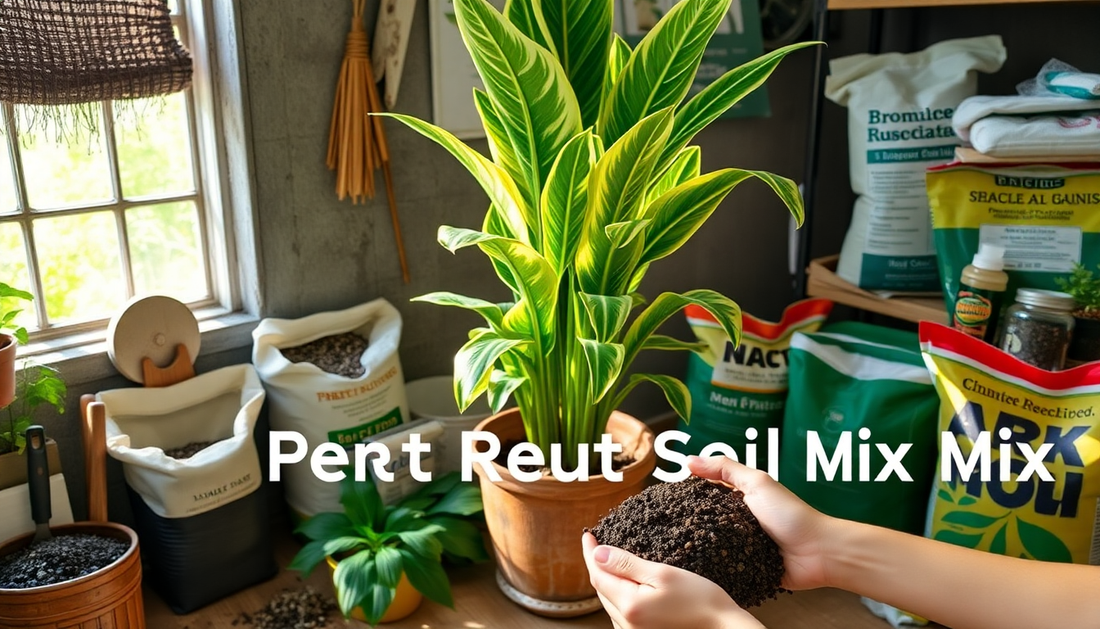
The Ultimate Guide to Creating the Perfect Soil Mix for Your Dumb Cane
As an avid indoor gardener, I've learned that the key to a thriving Dumb Cane (Dieffenbachia) lies in the soil mix. These lush, tropical plants are known for their stunning foliage, but they can be finicky when it comes to their growing medium. In this comprehensive guide, I'll share my tried-and-true tips for creating the ideal soil mix that will help your Dumb Cane thrive.
Understanding the Dumb Cane's Soil Needs
Dumb Canes are native to the tropical regions of Central and South America, where they grow in the understory of lush, humid forests. In their natural habitat, they thrive in rich, well-draining soil that is consistently moist but not waterlogged. To replicate these conditions in your home, you'll need to create a soil mix that provides the perfect balance of nutrients, aeration, and moisture retention.
Nutrient-Rich Organic Matter
Dumb Canes are heavy feeders and require a soil mix that is rich in organic matter. This can come from a variety of sources, such as compost, peat moss, or well-rotted bark. These materials not only provide essential nutrients for the plant but also help to improve soil structure and water-holding capacity.
Excellent Drainage
While Dumb Canes enjoy consistently moist soil, they cannot tolerate waterlogged conditions, which can lead to root rot and other issues. To ensure proper drainage, you'll need to incorporate materials like perlite, vermiculite, or coarse sand into your soil mix.
Optimal Moisture Retention
Dumb Canes thrive in a humid environment, so your soil mix should be able to retain moisture without becoming overly saturated. Ingredients like sphagnum peat moss or coco coir can help to hold onto water while still allowing for proper aeration.
Creating the Perfect Soil Mix for Dumb Cane
Now that you understand the key components of a Dumb Cane's ideal soil, let's dive into the step-by-step process of creating the perfect mix.
Ingredients
- 2 parts high-quality potting soil or compost
- 1 part peat moss or coco coir
- 1 part perlite or vermiculite
- 1 part well-rotted bark or charcoal
- 1 cup of slow-release organic fertilizer (such as bone meal or blood meal)
Mixing Instructions
-
In a large container or wheelbarrow, combine the potting soil or compost, peat moss or coco coir, and perlite or vermiculite. Mix these ingredients thoroughly until they are evenly distributed.
-
Add the well-rotted bark or charcoal and mix again to ensure even distribution.
-
Sprinkle the slow-release organic fertilizer over the soil mix and mix it in thoroughly.
-
Test the soil mix by squeezing a handful. It should hold its shape but still be light and airy, with no signs of compaction.
-
If the soil mix seems too dense or heavy, add a bit more perlite or vermiculite. If it's too light and airy, add a bit more potting soil or compost.
Adjusting pH and Nutrients
Dumb Canes prefer a slightly acidic soil with a pH between 5.5 and 6.5. You can test the pH of your soil mix using a simple soil test kit and adjust it accordingly by adding lime (to raise the pH) or sulfur (to lower the pH).
Additionally, you may want to consider supplementing your soil mix with a balanced, slow-release organic fertilizer to ensure your Dumb Cane receives all the essential nutrients it needs for optimal growth.
Maintaining the Perfect Soil Mix
Proper soil maintenance is crucial for the long-term health of your Dumb Cane. Here are some tips to keep your soil mix in top condition:
Repotting and Refreshing
Every 12-18 months, you'll need to repot your Dumb Cane and refresh the soil mix. Gently remove the plant from its current pot, trim any damaged or overgrown roots, and replant it in a new pot with fresh soil mix.
Watering and Moisture Monitoring
Dumb Canes prefer consistently moist but not waterlogged soil. Check the soil regularly and water when the top inch or two begins to dry out. Avoid letting the soil become completely dry, as this can stress the plant.
Fertilizing and Nutrient Replenishment
Apply a balanced, slow-release organic fertilizer to your Dumb Cane every 3-4 months to replenish the soil's nutrient levels. You can also supplement with a liquid fertilizer during the growing season to provide an extra boost.
By following these guidelines for creating and maintaining the perfect soil mix, you'll be well on your way to growing a thriving, lush Dumb Cane that will bring beauty and life to your indoor space. Happy gardening!







No comments